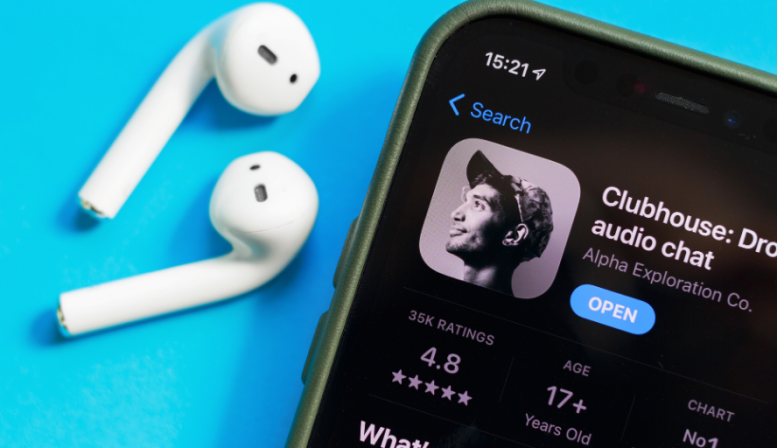The New Kid on the Block: Starter Guide to Clubhouse for Public Speakers

In March 2020, Rohan Seth and Paul Davison launched an audio-only app that allows you to listen in or start your own discussions with people from around the world on any topic one can think of. Though Clubhouse had been around for a while now, it only took off in February 2021 when Elon Musk hosted a talk with Robinhood CEO, Vlad Tenev. Clubhouse value quickly went up to $1bn making the app into Unicorn startup.
Clubhouse is still in its beta stages, and users are being invited to join gradually. Right now, new members are limited to inviting just two other people to join. The more and longer they use the app, the more invitations they can send out to others. Despite the soft launch, Clubhouse popularity among users has prompted some to call it downright “addictive”. I guess it came at a moment when we were all in need of a break from the screen and a new addiction.
So if you’re not yet on the app, you need to ask your friends or colleagues whether they have any invitations to spare. Currently, the app only supports iOS, so Android users can’t jump in just yet. We know! It sounds very exclusivist, but a public launch is expected soon, which will mean that access to the app will be easier.
While it’s difficult to get on Clubhouse at the moment, it’s worth persevering just to get a head start. Early adopters have a chance to explore and understand how to best use the app and already be Clubhouse experts when everyone is finally able to join.
From the desert, in terms of live events, that was 2020, Clubhouse has appeared like an oasis. The app opens up opportunities for all those who fear public speaking to practice without the intimidating eyes of the audience focused on them, and offers experienced speakers a chance to continue sharing their expertise and network just like back in the day. It’s a game-changer for public speaking, and knowing the ins and outs of the platform will help you make use of all the features to your advantage.
We’ve summed up the basics you’ll need to know to get a jump start.
The Language of Clubhouse

To master Clubhouse you first need to speak the Clubhouse lingo. When you arrive on the app, don’t be surprised if it feels and sounds like you’re attending a really big conference with hundreds of stages and speakers. The virtual space is intentionally modelled after the real space.
First of all, the list of discussions you scroll through is the corridor. From there you can go into a room if you want to listen in on a discussion. If you don’t like what you hear, you can then leave quietly. If you’ve started a room, you’re walking on stage as a speaker or a moderator. Once you’re there you can pass the mic to others, and at the end, you might even get a clap.
The language, being brought from the world of live events, creates the illusion of being at a huge conference. However, like any new app it has already developed its own jargon. Here are a few of the things you might hear when attending a discussion.
Moderators will often ask you to pull to refresh (PTR). This literally means pulling your screen down to refresh the room. This is done for two main reasons:
One is to refresh the profile images of the current speaker. Because there is no way to send visuals on Clubhouse, speakers or moderators will often update their profile images to reflect the topic they’re talking about.
The second reason is to refresh the order of the speakers in the room. This helps both the moderators and the audience to keep track of who’s next in line to take the stage. You can pull to refresh without being prompted if you want to see the updated order at any point.
Reset the Room
People tend to digress from the topic at hand, even when they are experienced public speakers. It’s how our minds make connections and associations, and it’s fine. But when a certain topic is announced, the audience is there to listen to experts talking about it, and going off-topic might make some want to leave the room. You’ll hear moderators prompting speakers to reset the room as a way to bring them back to the initial topic.
Hit the + sign
You can use the + sign to invite any of your followers to join the room you’re in. Sometimes moderators will ask members of the audience to do it, but if you think one of your followers on Clubhouse might be interested in the discussion, just go for it, hit that + sign.
Different roles in Clubhouse rooms

Every room is split into three different areas: the moderator area, the speaker area, and the audience area.
The moderator is the person that started the room in the first place. They can unmute people, invite members of the audience on stage, make speakers moderators, and finally, close the room.
The speakers are in the stage area where they patiently wait for their turn to speak. The moderator decides who can go on the stage, either by adding certain speakers they have previously agreed with to speak or by adding members of the audience that have raised their hands signalling they’d like to contribute to the discussion.
The audience is made up of users that usually want to listen in and might at some point want to take the stage to make a contribution. They can do so by raising their hand. They then have to wait for the moderator to allow them onto the stage. Members of the audience can leave the room at any point, but should do so quietly.
Clubhouse etiquette suggests that both members of the audience and speakers mute their mics when it’s not their turn to speak.
Creating your profile

If you’re a public speaker, you’re probably used to creating a profile by now and it’ll be a piece of cake. You’ll also know how important your profile is and what it takes to create a good one. However, Clubhouse is fairly new and might not be like any of the platforms you’ve used so far, so here are a few pieces of advice on the matter.
Choose a professional photo. Even Facebook and Instagram have become more about professional connections and not just about following your friends and family’s Christmas dinner. Clubhouse is already very much used as a platform where people with similar interests and expertise gather to exchange ideas. Because it’s an audio-only app, visuals are limited and you only get to share this one photo. Make it count. You’re more likely to find experts in your field than friends on Clubhouse, so treat it more like you would LinkedIn or SpeakerHub than a social media platform.
Think carefully when choosing your @handle because you can’t change it later. It depends on what you want to use Clubhouse for, but if you don’t yet know, it’s best to go with a safe option and put down your name or the closest to it you can get.
The best thing to do before writing your Clubhouse bio is to read others to get some inspiration. You’re given three lines for your bio, so think carefully. You can always edit your bio afterwards, but why not get off to a good start? Think of the most important things about you that will fit into three lines. There’s no character limit for the three lines, but when trying to save your bio, the app will give you a notification and advise you to shorten your bio if it’s too long. If you can’t decide what to leave out and what to include, draft a few variants and A/B test them over time.
If you want to promote your website, you can add it to your bio. It’s the only chance you’ll get to share it, however, it won’t be a clickable link. Because your followers won’t be able to copy it, the best practice is to add a short and easy-to-remember link. A short link also means you’ll have enough space left to say the important things.
Clubhouse allows you to connect your Instagram and Twitter, but that’s the extent of the clickable links you can share on your profile.
The app uses a plain-text editor, so to customize your bio and stand out, you’ll have to turn to other apps. Luckily, there are already apps out there that come to the rescue. Clubhouse Bio Builder helps create an eye-catching bio, and Clubhouse Glow and Clubhouse Profile Picture Ring help you style up the ring around your photo that glows when you speak in a room. These are just a few of the tools that have popped up in the past month. There are many more out there that are worth exploring if only just for fun.
Last but not least, use keywords in your bio to make it easier for other users to find you when searching for a particular topic.
Curating your Clubhouse
To many people, Clubhouse looks very much like a conference. But if it becomes a conference covering all discussion topics, trying to solve all the world’s problems, it gets overwhelming to say the least.
If you feel overwhelmed just reading this, there are a few things to do.
Once you’ve joined the app, before you even create your own profile, you will be asked to select your interests. Choose carefully because the algorithms will use this information to decide which rooms appear in your corridor. This is one way to make sure you get to see only those discussions that are relevant to you.
Another way to curate the content is to carefully select the people you follow. The algorithms will look at the rooms they attend and take that into account when populating your corridor. Again, it’s not about following your family, unless you want to open up a room to discuss Gran’s dahlias.
If we go back to the live event analogy, Clubhouse allows you to curate your content and pretty much create the conference you want to be attending. Just make sure you leave the event site to get some sleep now and then.
Conclusion
Public speakers will undoubtedly and rightly have their doubts about Clubhouse. If after reading this you feel like you want to know more, follow Clubhouse founders Paul Davison (@Paul) and Rohan Seth (@Rohan). They host a weekly town hall meeting on Sundays at noon ET to announce updates and give advice on how to use the app. They also run a New User Onboarding meeting every Wednesday at 9 pm ET. Times may change in the future, so best to follow them for updates.
Regardless of how you feel about it, this huge phenomenon is symptomatic of the world we live in and must be recognised as such. Public speakers might be sceptical about this democratisation, but should look at it as an opportunity to shine. Clubhouse opens up the stage for everyone, but the differences between those used to the stage and the newbies are visible — or should that be ‘audible’.
While most of the world is still in a strict lockdown, and gathering huge groups of people in a conference hall still lies in the distant future, let’s enjoy coming together on Clubhouse as best we can. You’ll meet people that you never would have met otherwise, network almost like you used to, and you’ll learn a lot in the process.








